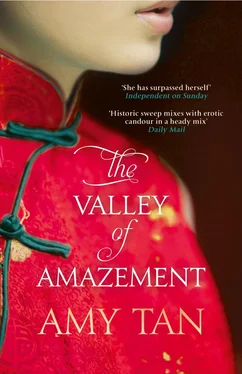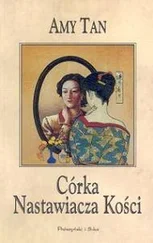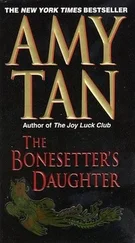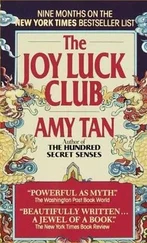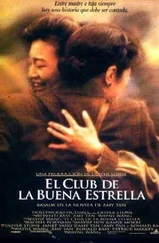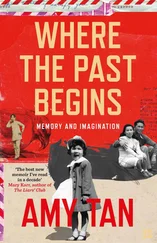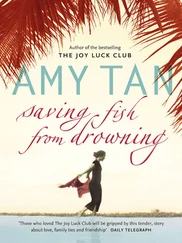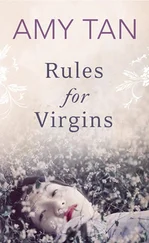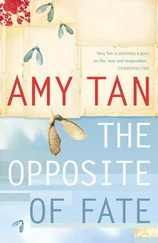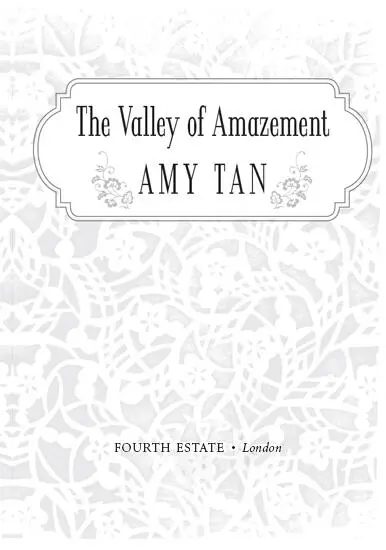
COPYRIGHT Copyright Dedication Epigraph Chapter 1: Hidden Jade Path Chapter 2: The New Republic Chapter 3: The Hall of Tranquility Chapter 4: Etiquette for Beauties of the Boudoir Chapter 5: The Memory of Desire Chapter 6: A Singing Sparrow Chapter 7: A Blue Disease Chapter 8: The Two Mrs. Ivorys Chapter 9: Quicksand Years Chapter 10: Moon Pond Village Chapter 11: Heaven Mountain Chapter 12: The Valley of Amazement Chapter 13: Fata Morgana Chapter 14: Shanghailanders Chapter 15: The City at the End of the Sea Acknowledgments About the Author Also by Amy Tan About the Publisher
Fourth Estate
An imprint of HarperCollins Publishers
77–85 Fulham Palace Road
London W6 8JB
www.4thestate.co.uk
First published in Great Britain by Fourth Estate in 2013
First published in the United States by Ecco in 2013
Copyright © Amy Tan 2013
Cover photograph © ZenShui/James Hardy
Amy Tan asserts the moral right to be identified as the author of this work.
A catalogue record for this book is available from the British Library.
This novel is entirely a work of fiction. The names, characters and incidents portrayed in it are the work of the author’s imagination. Any resemblance to actual persons, living or dead, events or localities is entirely coincidental.
All rights reserved under International and Pan-American Copyright Conventions. By payment of the required fees, you have been granted the non-exclusive, non-transferable right to access and read the text of this e-book on screen. No part of this text may be reproduced, transmitted, down-loaded, decompiled, reverse engineered, or stored in or introduced into any information storage and retrieval system, in any form or by any means, whether electronic or mechanical, now known or hereinafter invented, without the express written permission of HarperCollins.
Ebook Edition © November 2013 ISBN: 9780007467242
Version: 2014-07-15
DEDICATION Dedication Epigraph Chapter 1: Hidden Jade Path Chapter 2: The New Republic Chapter 3: The Hall of Tranquility Chapter 4: Etiquette for Beauties of the Boudoir Chapter 5: The Memory of Desire Chapter 6: A Singing Sparrow Chapter 7: A Blue Disease Chapter 8: The Two Mrs. Ivorys Chapter 9: Quicksand Years Chapter 10: Moon Pond Village Chapter 11: Heaven Mountain Chapter 12: The Valley of Amazement Chapter 13: Fata Morgana Chapter 14: Shanghailanders Chapter 15: The City at the End of the Sea Acknowledgments About the Author Also by Amy Tan About the Publisher
FOR
KATHI KAMEN GOLDMARK AND ZHENG CAO
KINDRED SPIRITS
EPIGRAPH Epigraph Chapter 1: Hidden Jade Path Chapter 2: The New Republic Chapter 3: The Hall of Tranquility Chapter 4: Etiquette for Beauties of the Boudoir Chapter 5: The Memory of Desire Chapter 6: A Singing Sparrow Chapter 7: A Blue Disease Chapter 8: The Two Mrs. Ivorys Chapter 9: Quicksand Years Chapter 10: Moon Pond Village Chapter 11: Heaven Mountain Chapter 12: The Valley of Amazement Chapter 13: Fata Morgana Chapter 14: Shanghailanders Chapter 15: The City at the End of the Sea Acknowledgments About the Author Also by Amy Tan About the Publisher
Quicksand years that whirl me I know not whither,
Your schemes, politics, fail, lines give way, substances mock and
elude me,
Only the theme I sing, the great and strong-possess’d soul, eludes
not,
One’s-self, must never give way — that is the final substance—
that out of all is sure,
Out of politics, triumphs, battles, life, what at last finally remains?
When shows break up what but One’s-Self is sure?
—WALT WHITMAN, “QUICKSAND YEARS”
Copyright
Dedication
Epigraph
Chapter 1: Hidden Jade Path
Chapter 2: The New Republic
Chapter 3: The Hall of Tranquility
Chapter 4: Etiquette for Beauties of the Boudoir
Chapter 5: The Memory of Desire
Chapter 6: A Singing Sparrow
Chapter 7: A Blue Disease
Chapter 8: The Two Mrs. Ivorys
Chapter 9: Quicksand Years
Chapter 10: Moon Pond Village
Chapter 11: Heaven Mountain
Chapter 12: The Valley of Amazement
Chapter 13: Fata Morgana
Chapter 14: Shanghailanders
Chapter 15: The City at the End of the Sea
Acknowledgments
About the Author
Also by Amy Tan
About the Publisher
CHAPTER 1
HIDDEN JADE PATH
Shanghai1905–1907Violet
When I was seven, I knew exactly who I was: a thoroughly American girl in race, manners, and speech, whose mother, Lulu Minturn, was the only white woman who owned a first-class courtesan house in Shanghai.
My mother named me Violet after a tiny flower she loved as a girl growing up in San Francisco, a city I have seen only in postcards. I grew to hate my name. The courtesans pronounced it like the Shanghainese word vyau-la —what you said when you wanted to get rid of something. “Vyau-la! Vyau-la!” greeted me everywhere.
My mother took a Chinese name, Lulu Mimi, which sounded like her American one, and her courtesan house was then known as the House of Lulu Mimi. Her Western clients knew it by the English translation of the characters in her name: Hidden Jade Path. There were no other first-class courtesan houses that catered to both Chinese and Western clients, many of whom were among the wealthiest in foreign trade. And thus, she broke taboo rather extravagantly in both worlds.
That house of flowers was my entire world. I had no peers or little American friends. When I was six, Mother enrolled me in Miss Jewell’s Academy for Girls. There were only fourteen pupils, and they were all cruel. Some of their mothers had objected to my presence, and those daughters united all the girls in a plot to expel me. They said I lived in a house of “evil ways,” and that no one should touch me, lest my taint rub off on them. They also told the teacher I cursed all the time, when I had done so only once. But the worst insult came from an older girl with silly ringlets. On my third day, I arrived at school and was walking down the hallway when this girl walked briskly up to me and said within hearing distance of my teacher and the younger class girls: “You spoke Chinee to a Chinee beggar and that makes you Chinee.” I could not bear one more of her insults. I grabbed her ringlets and hung on. She screamed, and a dozen fists pummeled my back and another bloodied my lip and knocked out a tooth that had already been loose. I spit it out, and we all stared for a second at the glistening tusk, and then I clutched my neck for dramatic effect and shrieked, “I’ve been killed!” before collapsing to the floor. One girl fainted, and the ringleader and her pack scampered off with stricken faces. I picked up the tooth—a former living part of me—and the teacher quickly put a knotted kerchief to my face to stanch the blood, then sent me home in a rickshaw with no parting words of comfort. Mother decided on the spot that I would be tutored at home.
Confused, I told her what I had said to the old beggar: “Lao huazi, let me by.” Until she told me that lao huazi was the Chinese word for “beggar,” I had not known I was speaking a hodgepodge of English, Chinese, and the Shanghainese dialect. Then again, why would I know the word beggar in English when I had never seen an American grandpa slumped against a wall, mumbling with a slack mouth so that I might have pity on him? Until I went to school, I had been speaking my peculiar language only in Hidden Jade Path to our four courtesans, their attendants, and the servants. Their syllables of gossip and flirtation, complaints and woe, went into my ear, and came out of my mouth, and in conversations I had with my mother, I had never been told there was anything amiss with my speech. Adding to the mess, Mother also spoke Chinese, and her attendant, Golden Dove, also spoke English.
Читать дальше
